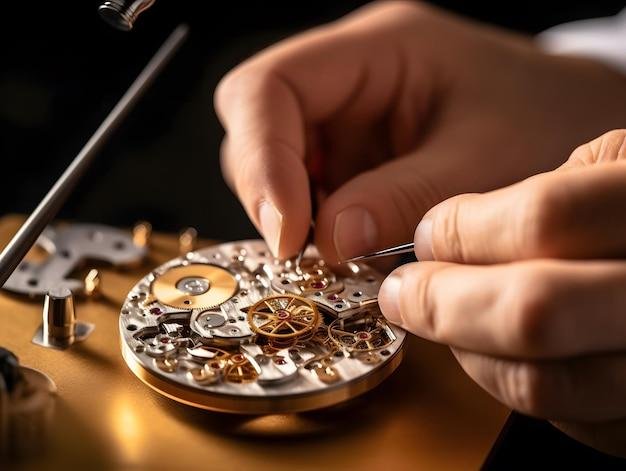The art of watchmaking has captivated humankind for centuries. Behind every watch face lies an intricate world of precision engineering, aesthetics, and preservation of heritage craft. Whether you’re an avid watch collector or just an appreciator of fine craftsmanship, understanding the nuances of watchmaking reveals a deeper reverence for the watches we wear. Come discover what makes this industry such a timeless craft.
A Brief History of Watchmaking
Humans have sought to measure time since ancient civilizations first tracked the stars. Mechanical timekeeping emerged in Europe in the 14th century with weight-driven clocks. By the 1500s, clockmaking guilds were experimenting with miniaturized “watches” using springs instead of weights. Over centuries of refinement, watchmaking elevated into a prized craft that balanced cutting-edge engineering with artistic style.
Watch industry centers flourished in England, Switzerland, and Germany. Legendary brands that still operate today like Patek Philippe, Vacheron Constantin, Jaeger-LeCoultre, and A. Lange & Söhne produced iconic luxury timepieces. The 20th century brought quartz movements and a resurgence of interest in mechanical watchmaking. Modern limited edition timepieces now fetch millions at auction.
The Anatomy of a Watch
From the outside, a watch’s beauty captivates. Yet its inner workings are equally impressive. At its core is the movement, the tiny mechanical “motor” that tracks time using gears, springs, and levers. Movements with extra functions beyond the time are called “complications”. The intricate components are housed within a polished case and covered by a crystal and watch face called the dial.
Watchmakers painstakingly hand assemble each minuscule part of a fine mechanical watch, decorating components like rotors and bridges with ornate finishing techniques. The level of skill and artistry is akin to sculpture on a microscopic level. This nuanced craftsmanship makes each timepiece unique.
Iconic Watch Styles
The watchmaking lexicon contains a myriad of iconic watch types that aficionados covet. These include:
Chronographs: Watches with stopwatch functions operated by pushers on the case. Subdials keep track of minutes/hours/seconds when timing.
Dive Watches: Water-resistant watches with luminous dials/hands and rotating bezels for underwater timing.
Dress Watches: Elegant watches with slimmer cases to fit under shirt cuffs. Typically have simple faces with thin indices and leather straps.
Pilot Watches: Legible dial designs with oversized crowns and extra functions like GMT to aid aviators. Robust cases to withstand vibration.
There are also particular brands renowned for their watchmaking prowess in specific categories like Swiss Rolex for sports watches or German A. Lange & Söhne for ultra-high-end dress watches.
Preserving Heirloom Quality Craft
Amidst the world of smart devices, fine mechanical watches endure as showcases of human ingenuity and examples of coveted heirloom quality. To watchmakers, preserving their history and traditions is just as important as innovating for the future. Many brands still produce limited edition runs of vintage models using century-old techniques.
Watchmaking remains a meticulous integration of engineering, science, and art. The combination of hand-craftsmanship and mechanical precision makes it a timeless craft. For watch enthusiasts, owning a well-made timepiece allows one to carry human ingenuity right on the wrist.

